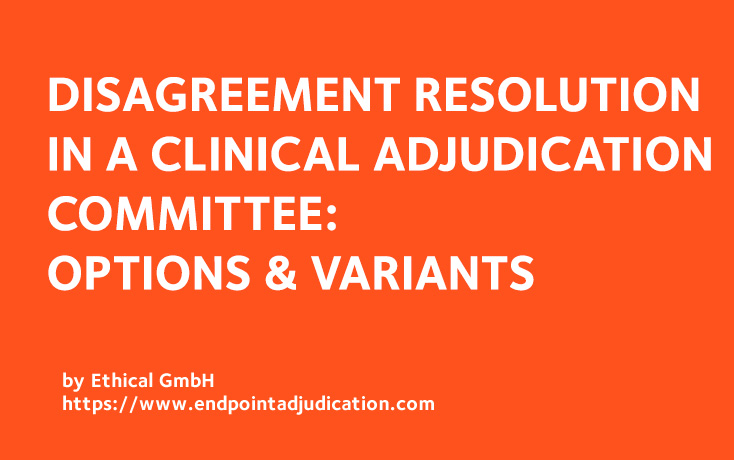The number of reviewers is a key topic when setting up an adjudication committee. More people means higher cost (internal and external) but also more complex management and higher risk of delays. Several models have been used ranging from a single reviewer to five or more. Is there an optimal solution or is each study a special case?
Study teams can choose from a variety of models for the composition of the adjudication committee:
SINGLE REVIEWER COMMITTEE
This option is used in large studies with simple endpoints to ensure consistency in the assessments. It is sufficient in these cases to verify that the reviewer agrees with the principal investigator.
ADJUDICATION COMMITTEE MADE OF TWO REVIEWERS
Several options exist: a disagreement is initially considered minor and the two reviewers can try to resolve it. If this is not possible, the disagreement is escalated to major and the chairperson is called to decide.
Alternatively, the case is reviewed by the entire adjudication committee during an ad hoc meeting.
Some variants of this option may involve the chairperson as one of two reviewers; in case of disagreement and if no consensus is found, the chairperson’s opinion will prevail.
ADJUDICATION COMMITTEE MADE OF THREE REVIEWERS
Two options exist for this setting.
Either all three must agree in order to validate the outcome or two out of three majority are sufficient. Consensus meeting is always an option to resolve difficult cases.
The chairperson may be one of the three reviewers (in which case his/her opinion will prevail in case of disagreement) or a fourth person.
ADJUDICATION COMMITTEE MADE OF FOUR / FIVE OR EVEN MORE REVIEWERS
It is unusual that more than three reviewers are asked to study the same cases. This is a variant of the above options with slightly more complex management.
A study published in 1997 investigating the variation of outcomes depending on the number of reviewers, concluded that there is little impact and recommended using a maximum of three.
Further work is needed to evaluate if small adjudication committees are adequate when investigating small but important treatment effects or if they compromise the validity when the level of agreement is low.
In conclusion, when setting up your adjudication committee, consider the possible scenarios and keep the team as small as possible to avoid unnecessary complications that do not add to the quality of the result. Finally, the chairperson is a key player in all settings and should be seriously engaged in the process.
DOWNLOAD NOW THE FREE ENDPOINT ADJUDICATION HANDBOOK
The Complete Manual / Reference Book (34 pages) with all the topics related to the Independent Endpoint Adjudication Committees Management




